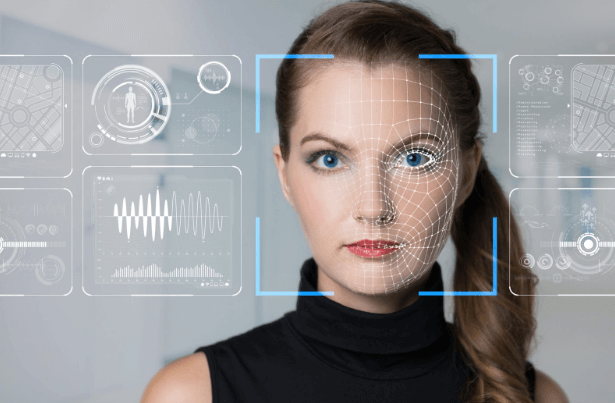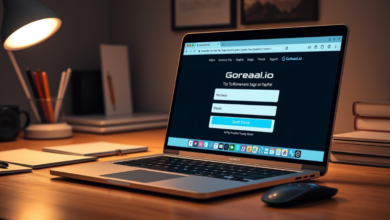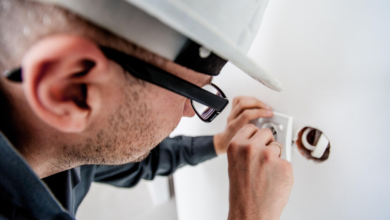What Is Liveness Detection and Why It Is So Crucial in The Age of Digital?

The threats to our identity and security in the digital world are also growing as the digital world evolves. As we advance in technology in terms of facial recognition systems and biometric authentication, it is not about whether one’s face matches up in the database — it is whether the face is real. That is where liveness detection comes in place — a fundamental protection against spoofing attacks, deep fakes, and identity fraud.
What Is Liveness Detection?
Liveness detection refers to one of the biometric security technologies which makes it possible to distinguish whether a respective facial recognition system interacts with a live person or with a frozen image, a video recording or a synthetic media (deepfakes). In other words, it makes the machines understand whether the person in front of the camera is a physical presence and real or not.
Liveness detection differs from the simple facial recognition which only compares patterns as it details the facial movements, depth information and behavioral clues to confirm that the input is real.
What Is So Important About Face Liveness Detection?
As an increasing number of companies adopt digital onboarding, remote verification, and passwordless authentication, cyber thugs have come up with ways of skirting past facial recognition systems through the use of prints of photos, pre-recorded videos, and hyper-realistic deepfakes. These attacks have rendered the traditional methods of authentication weak and unreliable.
Face liveness detection provides a solution as it makes it hard or impossible for the swindlers to deceive the system with static or tampered media. It brings a smart veil of trust to biometric authentication, which is crucial for such an industry as banking, healthcare, fintech and border control.
Types of Liveness Detection
Liveness detection usually has two major categories.
1. Passive Liveness Detection
The passive methods do not require the interaction of the user. The system rather in silence examines facial structure, skin texture, eye movement and general lighting to find out whether or not the subject is alive. This way is frictionless and user-oriented and is preferable for customer-facing applications.
2. Active Liveness Detection
The active methods involve the user to make some specific actions, for example, blinking or smiling. The system tracks such movements to ensure liveness. Although more interactive, it is highly secure and is popular in high risk settings.
3. 3D Liveness Detection
While spoofing methods become more advanced, so should our protection. The 3D liveness detection takes another step in protection as it evaluates the depth and shape of a user’s face by using technologies such as structured light or infrared sensors. By capturing three-dimensional map, system is capable of recognizing flat type of images or videos and differentiate real faces from them.
This sophisticated approach is very effective in blocking the attempts of fraud with the help of masks, photographs or even 3D-printed replica.
The role of the liveness detection software.
It is these anti-spoofing technologies that are propelled by liveness detection software. This software, when incorporated into biometric systems, applies artificial intelligence, computer vision, as well as machine learning, to analyze the real-time data and draw precise conclusions.
Best liveness detection software solutions are:
Speedy and smooth, with real time verification.
Non-device dependent and support compatible with web, mobile and kiosks devices.
Privacy centric, ensuring that user data is safe.
In compliance with the international regulations such as GDPR and ISO/IEC standards
Today, most of the leading vendors integrate liveness detection with other biometric means i.e., fingerprint scanning and voice recognition to create a comprehensive identity verification platform.
Deepfake Detection and Liveness Technology
Deepfake detection is one of the most important issues today. Deepfakes utilize AI to produce hyper-realistic phony videos or photos of people and are usually employed for evil purposes such as imitating a person. Such forgeries are not only utilized for misinformation campaigns in the online verification systems but also for identity fraud.
Liveness detection aids to curb deepfakes because it detects weird movements in faces, lighting incongruity, and disparity in depth — aspects even the most sophisticated deepfake creators find hard to reproduce realistically.
In addition, a number of businesses implement deep fake detection software in tandem with liveness detection solutions in order to protect from synthetic identities and modified media.
Applications of Liveness Detection
Liveness detection is not just a security buzzword – it’s a live process that is changing the landscape of industries:
Banking & Fintech: Blocks false access to the accounts and facilitates safe transactions.
Healthcare: Protects sensitive patient data and allows for remote identification.
eCommerce & Retail: Authenticates age and identity for regulated goods, or services.
Travel & Immigration: Allows technology-based border control and identity checks.
Gig Economy & Remote Work: Ensures presence of users for secure onboarding and attendance.
The Future of Liveness Detection
With the advancement in cyber threats, so does our security solutions need to have advancements. More adaptive AI models, real-time behavior details and hybrid solutions using biometrics, document verification and device intelligence are where the future of liveness detection is headed to.
The earlier the companies adopt the liveness detection, the lower the fraud rate will be, and the more competitive these companies can become as their services will offer a secure experience with no seams while being trustworthy.
Conclusion
Liveness detection is no longer a luxury — it’s a must in the times when identity fraud and deepfake attacks become rampant. From face liveness detection to 3D liveness detection and from liveness detection software to deepfake detection software, these tools are becoming the bones of the modern digital security.




